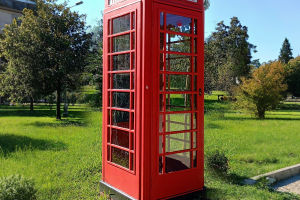Hello Lykkers! Ready to capture the stunning beauty of the coastline through your lens?
Whether you're an experienced photographer or just starting, coastline photography offers a unique chance to play with light, composition, and motion.
With the right techniques, the vast beauty of the shore can be turned into a masterpiece. These tips will help make each coastal shot something unforgettable!
1. Shoot During Golden and Blue Hours
Lighting is key to any photograph, and the coastline is no exception. For the most stunning results, aim to shoot during golden and blue hours. The golden hour, which occurs just after sunrise and before sunset, bathes the coastline in a warm, golden light, enhancing the colors of the sea and sky.
Alternatively, the blue hour, just before dawn or after dusk, brings out cooler tones and softens shadows, providing a more tranquil and ethereal look to your coastline shots. These times not only provide the best lighting but also give the scene an almost magical quality that is difficult to replicate during the day.
2. Incorporate Water Movement with Long Exposure
To add a sense of motion and calmness to your photos, use long exposure to capture the fluid movement of the water. This technique smooths out the surface of the sea, transforming crashing waves into soft, flowing patterns. Start with a shutter speed of around 1/4 to 1 second.
A tripod is essential to avoid camera shake, and using an ND (Neutral Density) filter will allow you to use longer exposures in daylight. If you’re shooting waves crashing on rocks, longer exposures can turn violent splashes into smooth, dramatic contrasts, making the photo feel more dynamic.
3. Use Foreground Elements for Depth
To make your coastline photos more visually interesting, always include a strong foreground element. This could be anything from rocks, seaweed, or even driftwood, to a path leading down to the water. Foreground elements create depth, leading the viewer’s eye into the scene, and making your image feel more three-dimensional.
A good composition trick is to align a large object, like a rock or piece of driftwood, in the lower third of the frame. This helps to balance the composition and anchor the viewer’s attention before they explore the expansive background.
4. Look for Reflections in Wet Sand or Puddles
Wet sand or puddles left by receding tides can add a magical reflective element to your coastline photos. After a wave has rolled in and the tide recedes, look for small pools of water left behind on the shore. These reflective surfaces can mirror the sky, clouds, and waves, adding another layer of beauty to the composition.
To get the best results, angle your camera slightly down toward the sand or puddle to capture both the land and its reflection. This technique works especially well during sunset or sunrise when the lighting enhances the reflective effect.
5. Timing the Tides for Optimal Composition
Understanding the tides is crucial for getting the perfect shot. The timing of high and low tides will dramatically change the look of the coastline. At high tide, the water will come in closer to the shore, creating more dramatic waves and a sense of power. On the other hand, low tide exposes hidden rocks, and tidal pools, revealing intricate textures and details that are normally submerged.
Pay attention to tide schedules when planning your photoshoot, and try to arrive before or after the tides change to capture these unique aspects of the coast.
Lykkers, each coastline has its own beauty, waiting to be captured with your unique perspective. By paying attention to lighting, using long exposures, adding depth with foreground elements, and understanding the tides, amazing coastline photos can be just a click away. With these tips in hand, the next coastline adventure can turn into a stunning photographic journey. Happy shooting and may every shot inspire awe!


